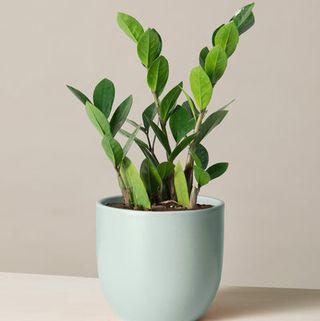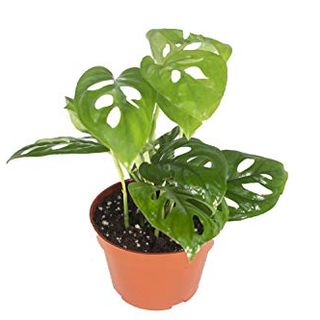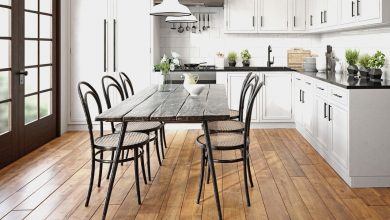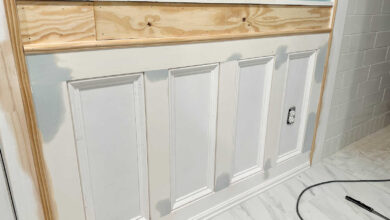How to Grow and Care for a Monstera Deliciosa Plant
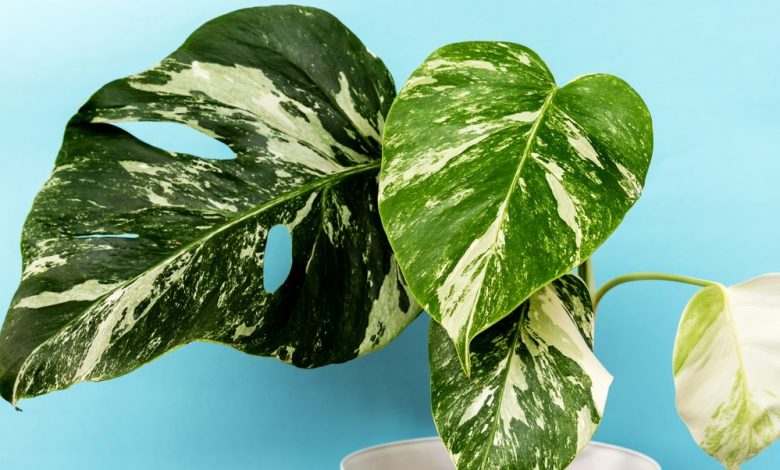
[ad_1]
Indoor plants can enhance the beauty and overall appearance of a space. Not only are they great for sprucing up your home decor and ridding the air of pollutants, but they’re also natural mood and creativity boosters. And if you’re a lover of greenery and vibrant florals, you know how important it is to find a herb or flower that’ll suit your room, personality and green thumb abilities. That’s why we’re bragging about our love for Monstera plants, along with sharing the best tips and tricks to Monstera plant care.
These climbing and easy-to-grow evergreens are also known as the “split-leaf philodendron” and are popular for their large, heart-shaped leaves, along with their unique pattern. Due to their size — with a rate of growing about one to two feet per year — they’re easy to spot in any part of your room, making them a great statement piece or focal point. With lots of light and the right amount of watering, these houseplants are easy to keep happy — especially due to their love of warm and humid environments. So make sure to grab a plant baby of your own because they’re sometimes hard to find (and expensive).
⚠️ Take note: Monstera plants can be toxic when consumed. Keep them away from pets and small children.
Types of Monstera Plants
According to Monstera Plant Resource Center, there are 48 species of Monstera plants, but you’ll only find a few in your local nursery. All vary in their size and color, with many potentially mislabeled due to the constant changes throughout their lifespan.
- Monstera Deliciosa: You’re more likely to find this species at your local store. They’re called “deliciosa” because they produce Mexican breadfruit (yum!).
- Monstera Variegata: This isn’t a separate plant, but a color variation. Variegated monsteras look as if they’ve been splattered or designed with white paint.
- Monstera Adansonii: While these are smaller than the deliciosa, the holes take up almost 50% of the leaves.
- Monstera Dubia: You may find the small and heart-shaped leaves on this plant to be cute. It grows like a vine, but with shorter stems.
- Monstera Obliqua: This species may be harder to find — even at Home Depot or Lowe’s. The holes take up most of the paper-thin leaves, making for a unique look.
Monstera Deliciosa Plant Care Tips
Since Monstera deliciosa is the most common plant you’ll find, we’re sharing the best tips to keep them healthy. These indoor plants take minimal effort when it comes to care, so don’t worry if you find yourself accidentally neglecting them for awhile.
Sunlight
This species doesn’t enjoy being in direct sunlight. While bright to medium sunlight is preferred, they can adapt to withstand harsher sun time.
Water
It’s normal to forget watering a plant. Luckily, this one requires watering only one to two times per week, per The Sill. If possible, water them in brighter light and use filtered water.
Temperature
Try not to go over 60°F when it comes to the temperature. Similar to most houseplants, Monstera deliciosa prefers the 65°F-85°F range. While humid conditions are preferred, normal room humidity will suffice. Consider adding a humidifier to the room to increase the levels.
Soil
Make sure to plant your Monstera in a pot with drainage holes. Use a good quality of potting soil that can easily drain. Mixing in perlite or lava rocks increases soil aeration.
Common Problems With Monstera Plants and How to Solve Them
✔️ Curling leaves: This is a sign that you’re either underwatering your plant or not giving it enough humidity. According to Smart Garden Guide, this can also mean that your evergreen is suffering from pest infestations, heat stress or overwatering. Check the soil and look closely at your Monstera to identify the problem.
✔️ The lack of splitting leaves: Monsteras are fondly named Swiss Cheese Plants for their fenestrations. If your plant doesn’t start splitting as it matures, check the water and sunlight levels and adjust them for a happier (and thriving) plant baby.
✔️ Brown tips: Check the humidity levels because they might be too low. Move your Monstera to another room — maybe the bathroom or kitchen — so the levels increase.
✔️ Ripped leaves: Because these plants have fenestrations, you may think ripping is normal. It’s not. Increase the humidity in the room and be gentle when touching the plant. And don’t worry. The rips will heal over time.
Tip: If your Monstera leaves are showing significant signs of damage, don’t be afraid to cut them off — especially if they have a lot of brown or black in them — as the areas won’t heal.
This content is created and maintained by a third party, and imported onto this page to help users provide their email addresses. You may be able to find more information about this and similar content at piano.io
[ad_2]
Source link


